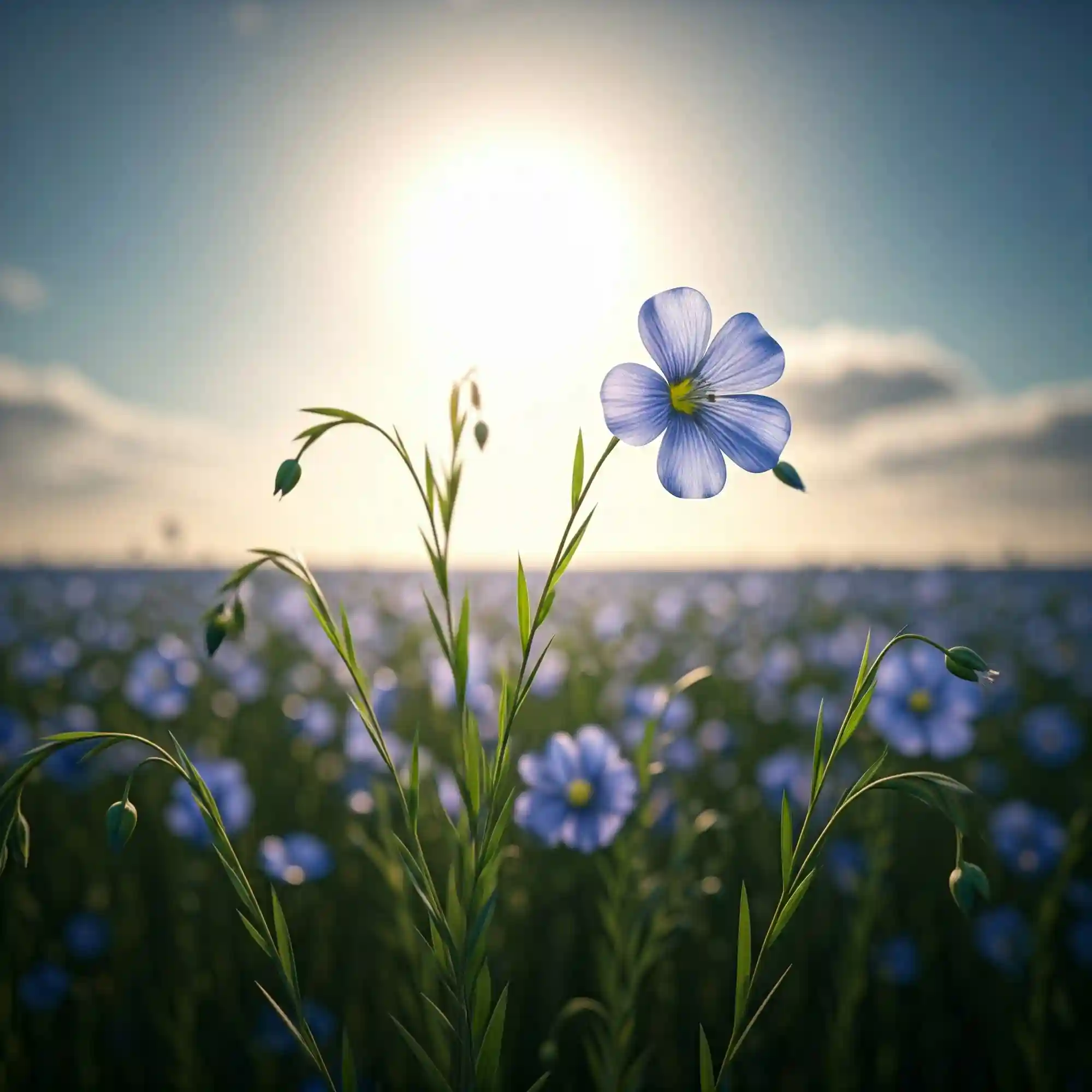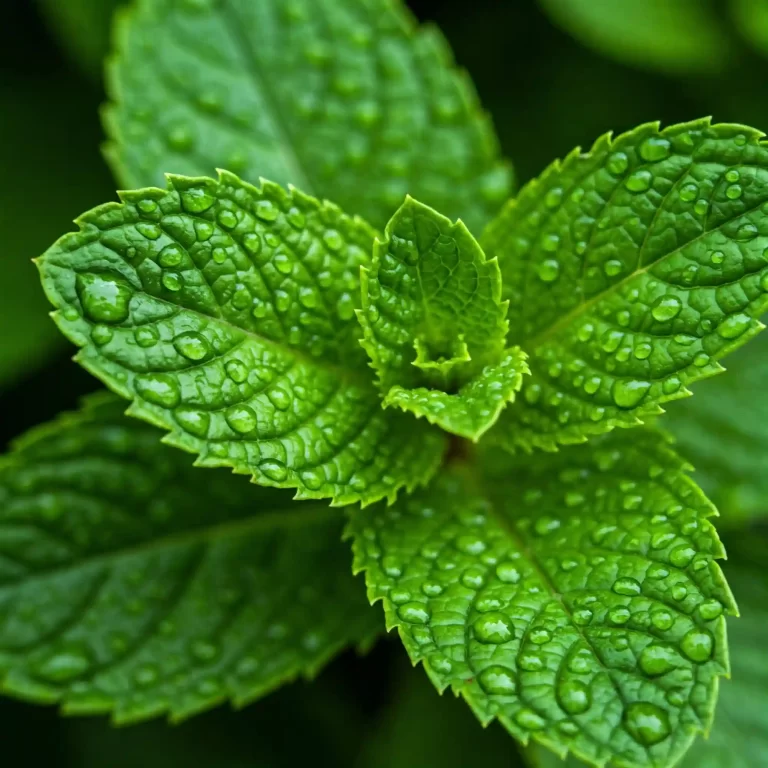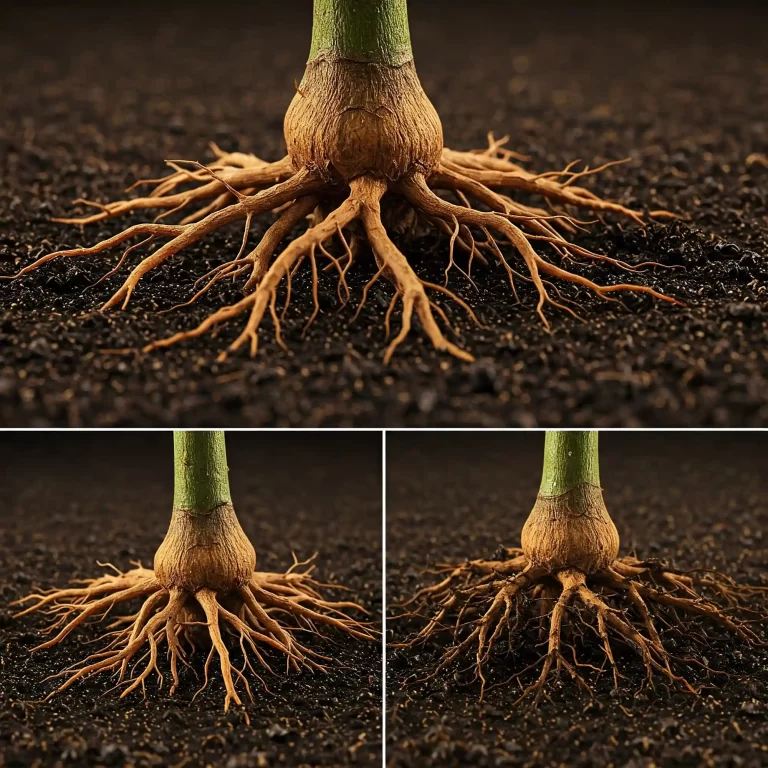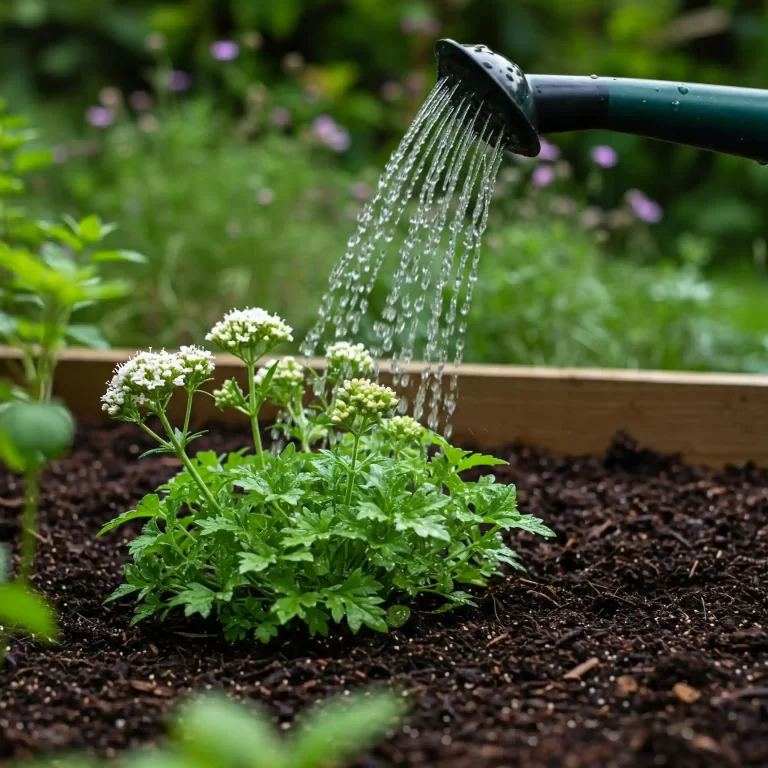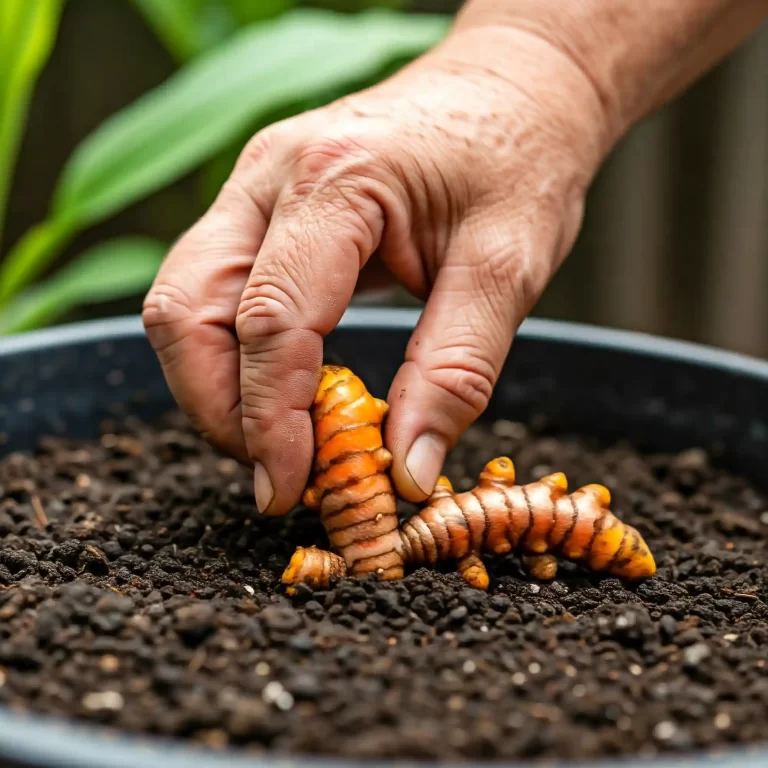How to Grow Flaxseed: Your Complete Guide to Growing Flax for Seed and (Yes!) Oil
Are you intrigued by the idea of growing your own nutritious flaxseed? Perhaps you’ve heard about the health benefits of flaxseed oil and wondered if you could produce it yourself. It can be frustrating to navigate the conflicting information online about growing flax and its connection to oil production. You want a clear, concise guide that cuts through the confusion and provides practical advice. I’m here to tell you that growing flaxseed at home is entirely achievable, and while extracting the oil yourself has its challenges, you can certainly enjoy the benefits of fresh, homegrown flaxseed. This comprehensive guide will be your go-to resource, covering everything you need to know, from planting and nurturing your flax plants to harvesting the seeds and understanding the process behind flaxseed oil.
Understanding Flax: Not an Herb, But a Powerhouse Plant
Flax, scientifically known as Linum usitatissimum, is an annual plant that has been cultivated for centuries. It’s a truly versatile crop, valued for both its seeds (which we know as flaxseed or linseed) and its fibers, which are used to produce linen. It’s important to clarify right from the start: flax is not a culinary herb. It’s an oilseed crop, meaning it’s primarily grown for its oil-rich seeds. This is a common misconception, as many people search for information on “flaxseed oil herbs,” likely due to the association of natural remedies and health benefits with herbs. You might have come across this term yourself, and I want to assure you that you’re in the right place to learn the correct information.
I remember the first time I encountered flax. I was researching natural sources of omega-3 fatty acids, and flaxseed kept popping up. I was initially confused by the term “flaxseed oil herbs,” but after some research, I understood that flax is a distinct plant with unique characteristics. It’s this experience that drives me to provide clear and accurate information to you.
A Brief History and Origins:
Flax has a rich history, dating back to ancient civilizations. Evidence suggests that flax was first cultivated in the Fertile Crescent thousands of years ago. It has been used for various purposes throughout history, from making textiles (linen) to providing food and medicine. The ancient Egyptians even used linen for mummification! This long history speaks to the enduring value and adaptability of this remarkable plant.
Nutritional Benefits of Flaxseed and Flaxseed Oil:
Flaxseed and flaxseed oil are nutritional powerhouses, packed with essential nutrients that contribute to overall health and well-being. Here are some of the key benefits:
- Omega-3 Fatty Acids: Flaxseed is one of the richest plant-based sources of alpha-linolenic acid (ALA), an omega-3 fatty acid. Omega-3s are crucial for heart health, brain function, and reducing inflammation.
- Fiber: Flaxseed is high in both soluble and insoluble fiber. Fiber promotes digestive health, helps regulate blood sugar levels, and can contribute to weight management.
- Lignans: Flaxseed contains lignans, which are plant compounds with antioxidant and estrogen-like properties. They may have a role in reducing the risk of certain cancers.
- Protein: Flaxseed is a good source of plant-based protein, making it a valuable addition to vegetarian and vegan diets.
Nutritional Comparison (per 100g):
| Nutrient | Flaxseed | Flaxseed Oil |
| Calories | 534 | 884 |
| Total Fat | 42g | 100g |
| Omega-3 (ALA) | 23g | 53g |
| Fiber | 27g | 0g |
| Protein | 18g | 0g |
This table highlights the significant difference in fiber content between flaxseed and flaxseed oil. While the oil is a concentrated source of omega-3s, you miss out on the valuable fiber when consuming only the oil.
Why Understanding Flax is Important for Growing It:
Knowing that flax is an oilseed crop, not an herb, helps you understand its growing requirements. It needs plenty of sunlight to produce abundant seeds, and it prefers well-draining soil to prevent root rot. These factors are crucial for successful flax cultivation, and I’ll delve into them in more detail in the following sections.
Case Study: Flax Cultivation in Different Climates:
Flax is adaptable to various climates, but it thrives in cooler temperatures. In Canada, for example, flax is a major agricultural crop, grown primarily for its seed. The long, cool summers provide ideal growing conditions. In contrast, in warmer regions, flax can be grown as a winter crop. This adaptability is a testament to the resilience of this plant.
I’ve personally found that understanding the specific needs of flax has been key to my success in growing it. You might face similar challenges as I did initially, but with the right knowledge and guidance, you can absolutely achieve a thriving flax patch in your own garden.
How to Plant Flaxseed: From Seed to Sprout
Planting flaxseed is a straightforward process, and with a little care, you can successfully cultivate these versatile plants in your own garden. Here’s a step-by-step guide to get you started:
When to Plant:
The best time to plant flaxseed is in the spring, once the danger of frost has passed and the soil has warmed up. This typically means late March or early April in many regions. However, if you live in an area with mild winters, you can also plant flax in the fall. I’ve found that planting in the spring allows the plants to take full advantage of the longer daylight hours and warmer temperatures, leading to a more abundant harvest.
Choosing the Right Location:
Flax plants thrive in full sun, meaning they need at least 6-8 hours of direct sunlight per day. When choosing a location in your garden, make sure it receives ample sunlight throughout the day. Additionally, flax prefers well-draining soil. This means the soil should allow water to pass through it easily, preventing waterlogging and root rot. If your soil is heavy clay, you can amend it with compost or other organic matter to improve drainage.
Soil Preparation:
Before planting, it’s essential to prepare the soil properly. Start by loosening the soil with a garden fork or tiller to a depth of about 6-8 inches. This will help the flax roots penetrate the soil more easily. Next, amend the soil with compost or other organic matter. This will improve the soil’s fertility and drainage, providing your flax plants with the nutrients they need to thrive.
Sowing the Seeds:
Flaxseed can be sown directly into the garden or started indoors. Direct sowing is the most common method, as it’s simple and efficient. To direct sow, scatter the seeds evenly over the prepared soil and then lightly rake them in. You can also plant the seeds in rows, spacing them about 1-2 inches apart. If you choose to start your flaxseed indoors, sow the seeds in small pots or trays about 4-6 weeks before the last expected frost. Once the seedlings have developed a few sets of leaves, you can transplant them into the garden.
Germination:
Flaxseed typically germinates within 7-10 days, depending on the soil temperature and moisture levels. Keep the soil consistently moist during this time, but avoid overwatering. Once the seedlings have emerged, thin them out to about 2-4 inches apart. This will give them enough room to grow and prevent overcrowding.
Additional Tips for Planting Flaxseed:
- Choose high-quality seeds: Look for seeds that are certified organic and non-GMO.
- Plant in a weed-free area: Weeds can compete with flax plants for resources, so it’s important to plant in an area that is free of weeds.
- Consider companion planting: Flax can be grown alongside other plants, such as carrots, onions, and garlic.
By following these tips, you can successfully plant flaxseed in your garden and enjoy the many benefits of this versatile plant.
Caring for Your Flax Plants: Nurturing Growth
Once your flax seedlings have emerged, it’s important to provide them with the care they need to thrive. Here are some key aspects of flax plant care:
Watering:
Flax plants need consistent watering, especially during dry periods. However, it’s important to avoid overwatering, as this can lead to root rot. I’ve found that watering deeply once or twice a week is usually sufficient, depending on the weather conditions. You can check the soil moisture by inserting your finger about an inch into the soil. If it feels dry, it’s time to water.1
Weeding:
Weeds can compete with flax plants for resources, so it’s important to keep the area around your flax plants free of weeds. You can do this by hand-weeding or by using a hoe. I recommend weeding regularly, especially when the flax plants are young.
Fertilizing:
Flax plants are not heavy feeders, but they can benefit from a light application of fertilizer. I recommend using an organic fertilizer, such as compost tea or fish emulsion. You can apply the fertilizer once or twice during the growing season.
Pest and Disease Control:
Flax plants are relatively resistant to pests and diseases, but there are a few that can cause problems. Some common pests include aphids, flea beetles, and cutworms. Common diseases include aster yellows and Fusarium wilt. If you notice any signs of pests or diseases, you can take steps to control them. For example, you can use insecticidal soap to control aphids or flea beetles. You can also remove any infected plants to prevent the spread of disease.
Additional Tips for Caring for Flax Plants:
- Provide support: As flax plants grow taller, they may need support to prevent them from falling over. You can provide support by staking the plants or by using a trellis.
- Monitor for pests and diseases: Keep an eye on your flax plants for any signs of pests or diseases. If you catch problems early, you can take steps to control them before they become serious.
- Harvest at the right time: Flaxseed is typically ready to harvest in the fall, about 90-100 days after planting. You can tell if the seeds are ripe by checking the seed pods. The pods should be dry and brittle, and the seeds should be dark brown or black.
By following these tips, you can help your flax plants thrive and produce a bountiful harvest of nutritious flaxseed.
Harvesting Flaxseed: Reaping the Rewards
After nurturing your flax plants through the growing season, the time will come to harvest the fruits of your labor – the flaxseeds. This is a crucial step in the process, and knowing when and how to harvest correctly will ensure you get the best possible yield.
When to Harvest:
Knowing the right time to harvest is essential for maximizing your flaxseed yield. Flaxseed is typically ready for harvest in the fall, about 90-100 days after planting. However, this can vary depending on your climate and growing conditions. I’ve noticed that a key indicator of ripeness is the change in the plant’s appearance. The stalks will turn yellowish-brown, and the seed pods will become dry and brittle. The seeds inside should be dark brown or black and feel hard to the touch.
Harvesting Methods:
There are two main methods for harvesting flaxseed:
- Hand Harvesting: This method is suitable for smaller gardens or if you only have a few flax plants. To hand harvest, simply cut the stalks with a sharp knife or sickle just below the seed pods. Gather the cut stalks into small bundles and tie them together.
- Mechanical Harvesting: This method is more efficient for larger-scale flax cultivation. It involves using a combine harvester, which cuts the stalks and separates the seeds from the pods in one process. However, this is usually not practical for home gardeners.
Threshing and Winnowing:
Once you’ve harvested the stalks, you’ll need to separate the seeds from the pods. This process is called threshing. There are a few ways to do this:
- By Hand: You can rub the dried seed pods between your hands or gently beat them against a hard surface to release the seeds.
- Using a Pillowcase or Bag: Place the dried stalks inside a pillowcase or burlap bag and beat it against a hard surface. This will help to break open the pods and release the seeds.
After threshing, you’ll need to remove any remaining chaff or debris from the seeds. This process is called winnowing. You can do this by using a fan or by pouring the seeds from one container to another in a gentle breeze. The wind will blow away the lighter chaff, leaving the heavier seeds behind.
Storing Flaxseed:
Proper storage is essential for maintaining the quality and freshness of your harvested flaxseed. Here are some tips:
- Dry the Seeds Thoroughly: Before storing, make sure the seeds are completely dry to prevent mold growth. You can spread them out on a tray or screen in a well-ventilated area for a few days.
- Store in an Airtight Container: Once dry, store the seeds in an airtight container in a cool, dry, and dark place.
- Refrigerate for Longer Storage: For longer storage, you can refrigerate the seeds. This will help to prevent them from going rancid.
By following these harvesting and storage tips, you can enjoy your homegrown flaxseed for months to come.
Understanding Flaxseed Oil: From Seed to Oil (and Why DIY is Tricky)
Many people are drawn to growing flaxseed because of the health benefits of flaxseed oil. It’s understandable to wonder if you can easily produce this oil at home from your homegrown flax. While growing flaxseed is relatively simple, extracting the oil is a different story. Let’s delve into the process and why DIY oil extraction is generally not recommended for home gardeners.
How Flaxseed Oil is Commercially Extracted:
Commercially, flaxseed oil is extracted through a process called cold-pressing. This involves mechanically pressing the flaxseeds to extract the oil without using heat or chemical solvents. This method helps to preserve the oil’s nutritional value, particularly the delicate omega-3 fatty acids. The cold-pressed oil is then typically filtered to remove any remaining sediment.
Why DIY Oil Extraction at Home is Generally Not Recommended:
While there are some DIY methods for extracting oil from seeds, they are generally not suitable for flaxseed for several reasons:
- Specialized Equipment: Efficient oil extraction requires specialized equipment, such as an oil press or expeller. These machines are designed to apply high pressure to the seeds, maximizing oil yield. Most home gardeners don’t have access to this equipment.
- Low Yield: Even with some DIY methods, the oil yield from flaxseed is likely to be very low, making it an inefficient process.
- Oxidation and Rancidity: Flaxseed oil is highly susceptible to oxidation, which can lead to rancidity and a loss of nutritional value. Commercial extraction processes are designed to minimize oxidation by controlling temperature and exposure to air and light. It’s difficult to replicate these conditions at home.
- Safety Concerns: Some DIY methods involve using heat or solvents, which can be dangerous if not done correctly.
Focus on Consuming Flaxseed Directly:
Instead of attempting to extract the oil at home, I highly recommend focusing on consuming the flaxseeds directly. You can enjoy the full nutritional benefits of flaxseed by:
- Grinding the Seeds: Grinding flaxseed breaks down the hard outer shell, making it easier for your body to absorb the nutrients. You can use a coffee grinder or a food processor to grind the seeds.
- Adding Ground Flaxseed to Foods: You can add ground flaxseed to smoothies, yogurt, oatmeal, baked goods, and other foods.
- Eating Whole Flaxseeds: You can also eat whole flaxseeds, but they may not be as easily digested. Soaking them in water for a few hours can help to soften them.
Commercial Flaxseed Oil Availability and Quality Factors:
If you prefer to consume flaxseed oil, it’s readily available in most health food stores and supermarkets. When choosing a flaxseed oil, look for:
- Cold-pressed oil: This indicates that the oil was extracted without heat, preserving its nutritional value.
- Organic certification: This ensures that the flaxseed was grown without the use of synthetic pesticides or fertilizers.
- Dark glass bottles: This helps to protect the oil from light, which can cause oxidation.
- Refrigeration: Flaxseed oil should be stored in the refrigerator to prevent rancidity.
By focusing on consuming flaxseed directly, you can easily enjoy its health benefits without the hassle and potential risks of DIY oil extraction. If you choose to use flaxseed oil, selecting a high-quality commercial product is the best option.
Flaxseed and Your Garden: Additional Benefits
Beyond providing nutritious seeds, flax can offer several additional benefits to your garden ecosystem. It’s a versatile plant that can contribute to overall garden health in various ways. Let’s explore some of these advantages:
Flax as a Companion Plant:
Companion planting is a gardening practice that involves planting different species together for mutual benefit. Flax has been found to be a beneficial companion plant for several other garden vegetables:
- Carrots: Flax is believed to deter carrot rust flies, a common pest that can damage carrot crops.
- Onions: Flax may help to repel onion flies, another troublesome pest for onion growers.
- Potatoes: Some gardeners believe that flax can help to protect potatoes from Colorado potato beetles.
While the exact mechanisms behind these benefits are not fully understood, it’s thought that flax may release certain compounds that repel pests or create a beneficial environment for the companion plants.
Using Flax Straw as Mulch or Compost:
After harvesting the flaxseeds, you’ll be left with the remaining stalks, often referred to as flax straw. Instead of discarding this material, you can put it to good use in your garden:
- Mulch: Flax straw can be used as a mulch around your plants. It helps to suppress weeds, retain moisture in the soil, and regulate soil temperature.
- Compost: Flax straw can also be added to your compost pile. It will break down over time, adding valuable organic matter to your compost.
Flax’s Role in Improving Soil Health:
Flax has a deep root system that can help to improve soil structure and drainage. The roots break up compacted soil, creating channels for air and water to penetrate. Additionally, flax can help to improve soil fertility by adding organic matter to the soil.
Additional Benefits of Growing Flax:
- Attracting Beneficial Insects: Flax flowers can attract beneficial insects to your garden, such as pollinators and predatory insects that help to control pests.
- Aesthetic Value: Flax plants have delicate blue flowers that can add beauty to your garden.
By incorporating flax into your garden, you can not only enjoy the benefits of fresh flaxseed but also improve the overall health and biodiversity of your garden ecosystem.
FAQ (Frequently Asked Questions):
Here are some of the most common questions I get about growing flaxseed, along with detailed answers based on my experience:
How long does it take to grow flaxseed from seed to mature plant?
Flaxseed typically takes about 90-100 days from planting to reach maturity. However, this can vary depending on your climate, the specific variety of flax you’re growing, and the growing conditions. In warmer climates, it may mature a bit faster, while in cooler climates, it may take a little longer.
What is the best soil and sunlight for growing flaxseed plants?
Flaxseed thrives in full sun, meaning it needs at least 6-8 hours of direct sunlight per day. It prefers well-draining soil that is rich in organic matter. A soil pH of between 6.0 and 7.5 is ideal. If your soil is heavy clay, you can amend it with compost or other organic matter to improve drainage.
How to grow flaxseed in containers on a balcony or patio?
Growing flaxseed in containers is definitely possible, especially if you have limited garden space. Choose a container that is at least 12 inches deep and has drainage holes. Fill it with a well-draining potting mix and plant the flaxseed as you would in the garden. Make sure to place the container in a sunny location and water regularly.
How to grow flaxseed in zone [Specific Zone Number] for optimal yield?
Flaxseed is adaptable to a wide range of climates, but it generally prefers cooler temperatures. It can be grown successfully in USDA plant hardiness zones 2-10. However, the specific planting time and growing conditions may vary depending on your zone. It’s always best to consult local resources or experienced gardeners in your area for zone-specific advice.
Is it easy to grow flaxseed at home for flaxseed oil production?
Growing flaxseed for the seeds themselves is relatively easy, as I’ve outlined in this guide. However, extracting flaxseed oil at home is more challenging and generally not recommended. It requires specialized equipment and careful control of temperature and other factors to prevent oxidation and rancidity. It’s much easier and safer to purchase high-quality flaxseed oil from a reputable source.
How do I harvest flaxseed?
Flaxseed is ready to harvest when the stalks turn yellowish-brown and the seed pods are dry and brittle. You can harvest by hand, cutting the stalks just below the seed pods, or by using a combine harvester for larger-scale operations. After harvesting, you’ll need to thresh and winnow the seeds to remove the pods and chaff.
What are common pests and diseases that affect flax?
Flax is relatively resistant to pests and diseases, but there are a few to watch out for. Some common pests include aphids, flea beetles, and cutworms. Common diseases include aster yellows and Fusarium wilt. You can control pests and diseases using organic methods, such as insecticidal soap or by removing infected plants.
Conclusion: Cultivating Your Own Flax and Enjoying Its Benefits
Growing flaxseed in your own garden can be a deeply rewarding experience. From the delicate blue flowers to the nutritious seeds, flax offers a unique blend of beauty and utility. I’ve found that tending to my flax plants connects me to the long history of this versatile crop, and I encourage you to experience this connection for yourself.
As we’ve explored in this guide, cultivating flax for its seeds is a relatively straightforward process, even for beginner gardeners. You’ve learned about the importance of sunlight and well-draining soil, the simple steps of planting and nurturing your flax plants, and the proper techniques for harvesting and storing the seeds.
While the process of extracting flaxseed oil at home presents significant challenges, understanding the commercial extraction methods and the reasons behind them allows you to make informed choices about consuming flaxseed and its oil. Remember, you can still reap the numerous health benefits of flax by incorporating the seeds directly into your diet. Grinding them and adding them to your favorite foods is a simple and effective way to boost your intake of omega-3s, fiber, and other essential nutrients.
Beyond the nutritional benefits, growing flax can also enhance your garden’s ecosystem. Its role as a companion plant, its potential use as mulch or compost, and its contribution to soil health make it a valuable addition to any garden.
I hope this comprehensive guide has provided you with the knowledge and inspiration you need to start growing your own flaxseed. Whether you’re a seasoned gardener or just beginning your gardening journey, I encourage you to give it a try. You might be surprised at how easy and rewarding it can be.
Remember, gardening is a continuous learning process. Don’t be afraid to experiment, make mistakes, and learn from your experiences. Each season brings new opportunities to grow and connect with nature.
Happy gardening!
